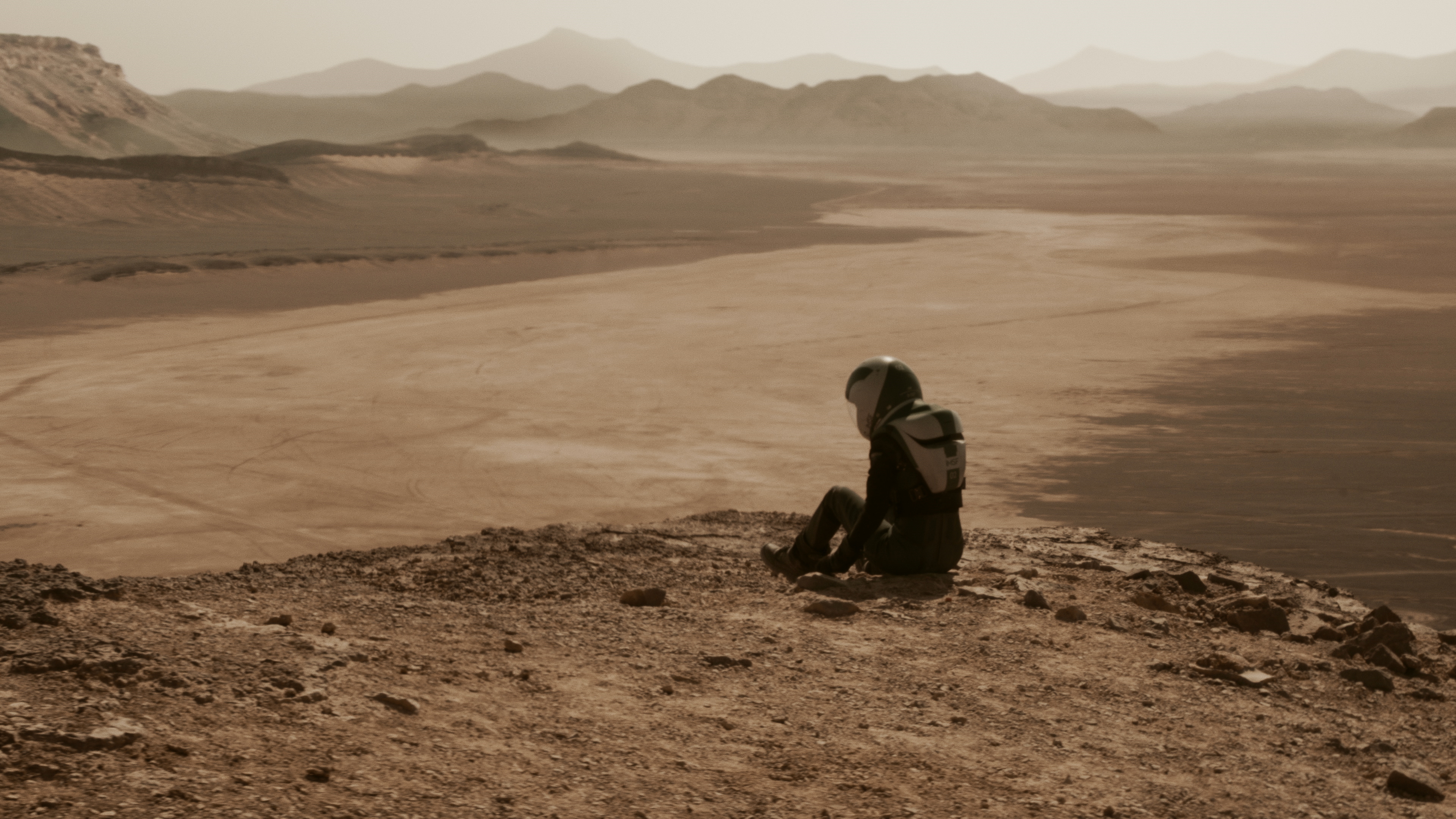New Planet, Same Old Humans: Nat Geo's 'Mars' Returns for Season 2 Next Month (Trailer)

NEW YORK — When it comes to colonizing Mars, transporting astronauts and keeping them alive might seem like the biggest hurdles today. But that's only the beginning — as the population of Mars continues to grow, so will the scope of the colonists' problems.
You can find out what life in a Mars colony will be like in a new season of the docudrama series "Mars," which premieres Nov. 12 on the National Geographic Channel. By combining scripted drama sequences and documentary-style interviews with expert "big thinkers," the series paints a picture of life on Mars while explaining the real science behind the fictional story.
Besides the inhospitable Martian environment — the lack of breathable air, the freezing temperatures and the dangerous radiation — the greatest obstacles that Mars colonists will face have little to do with the planet itself and everything to do with human nature. If civilizations still haven't figured out how to coexist peacefully on Earth, we probably won't be any better at getting along on another planet, the show suggests. From power struggles to disputes over natural resources, the colonists in "Mars" seem doomed to repeat the same mistakes that humanity has made on Earth. ['Mars': The Epic National Geographic Channel Miniseries in Pictures]
"We're not learning from our mistakes," Jeff Hephner, who stars as the commander of a private mining company on Mars, told reporters at New York Comic-Con on Thursday (Oct. 4). In the series, his mining company spars with scientists at the International Mars Science Foundation's (IMSF) Olympus Town settlement after the miners find liquid water on Mars. While the IMSF wants to preserve the site to search for evidence of microbial life, the miners seem interested only in extracting resources.
"Mars" Season 2 shows real footage of conflicts happening on Earth to draw parallels to what could happen to civilizations on Mars. For example, industrialization of Earth contributed to climate change. However, it also enabled humans to achieve things we wouldn't have been able to do in the pre-industrial era. Justin Wilkes, the show's executive producer, told reporters at New York Comic-Con that the show is not intended to send a message. Rather, the show uses Earth as an example of what can happen when humans start populating a planet.
You can watch all the Martian drama unfold on the National Geographic Channel with the series premiere on Monday (Nov. 12) at 9 p.m. EST/8 p.m. CST.
Email Hanneke Weitering at hweitering@space.com or follow her @hannekescience. Follow us @Spacedotcom, Facebook and Google+. Original article on Space.com.
Get the Space.com Newsletter
Breaking space news, the latest updates on rocket launches, skywatching events and more!
Join our Space Forums to keep talking space on the latest missions, night sky and more! And if you have a news tip, correction or comment, let us know at: community@space.com.

Hanneke Weitering is a multimedia journalist in the Pacific Northwest reporting on the future of aviation at FutureFlight.aero and Aviation International News and was previously the Editor for Spaceflight and Astronomy news here at Space.com. As an editor with over 10 years of experience in science journalism she has previously written for Scholastic Classroom Magazines, MedPage Today and The Joint Institute for Computational Sciences at Oak Ridge National Laboratory. After studying physics at the University of Tennessee in her hometown of Knoxville, she earned her graduate degree in Science, Health and Environmental Reporting (SHERP) from New York University. Hanneke joined the Space.com team in 2016 as a staff writer and producer, covering topics including spaceflight and astronomy. She currently lives in Seattle, home of the Space Needle, with her cat and two snakes. In her spare time, Hanneke enjoys exploring the Rocky Mountains, basking in nature and looking for dark skies to gaze at the cosmos.









